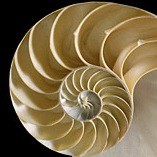Scholars have over time pondered two ayat – 4:3 and 35:1 which concern the elements named in the title above – connected somehow by the curious fact that each mentions the phrase “two and three and four.” Why are these specific numbers mentioned this unusual way? In light of what was previously discussed as a {3,4} set, which indicated the Quran’s architecture may be based on Allah’s name in Arabic, I’ve found that this Quranic {3,4} set is also part of a {2,3,4} set, matching the numbers given in these two ayat. By “set” I mean a group of objects (or “elements,” in this case from the Quran) as per set theory. Now, I’m no mathematician, but for me it’s a way of seeing these numbers as part of a fascinating structure in the Quran, found in Allah’s name in Arabic, the Basmalah, and how the last three surahs in the Quran connect to the first as we shall explain – and more. So first, we examine the two ayat, the meaning of “2 and 3 and 4” in each context, and how it relates to the Quran’s structure.
Continue readingNumerical/Math-based Analysis
Interpretation of Quranic Numbers 9.5 and 19
StandardThe number 19 is, for a number, relatively famous (or perhaps infamous) as a Quranic number, but is mentioned in the Quran (74:30) and is a factor of the number of suras in the Quran, 114 = 6 x 19. The number 9.5 is not known to be significant, but revealed a significance while studying the metaphor of the chambered nautilus and its significance in the Quran. That is explained elsewhere on this blog, but I will flesh it out separately here. The numbers 9.5 and 19 are formative elements in the design of Quranic Architecture as discussed on this blog. In its calendric architecture, the Quran is divided into 12 months for each “year,” or each complete turn of the spiral. For 114 suras, there are 9.5 years, expressed by an equation: 114 ➗ 12 = 9.5. Then when we multiply 9.5 x 2 = 19, we can ask the question “is there any significance to this equation in terms of the meaning of the Quran?” And the answer is a resounding YES! Explained below:
Continue readingPerfect Numbers and the Name Al-Rahman
StandardThis is a revelation of amazing correlations between the sura:ayat numbers where the name Al-Rahman occurs, and “perfect numbers,” explained below. The name Al-Rahman, when interpreted as the Almighty, forms a clear Yang/Yin relationship with the name Al-Raheem, the All-Merciful with which it is paired in the Basmalah, the invocation that begins all suras except one. A previous post describes the significance of the name Al-Rahman. Here we get even closer to the heart of the miracle regarding this powerful name. Studying the sura and aya numbers for all references for a word or phrase in the Quran can often seem like an exercise in futility, especially considering the earliest known manuscripts of the Quran do not contain such numbers. But with the name Al-Rahman, the results are two perfect numbers (explained below) multiplied by 100 whose sum is equally spectacular, and closely intertwined with other significant Quranic numbers to form a whole only the Almighty Al-Rahman Himself could have made.
Continue reading


